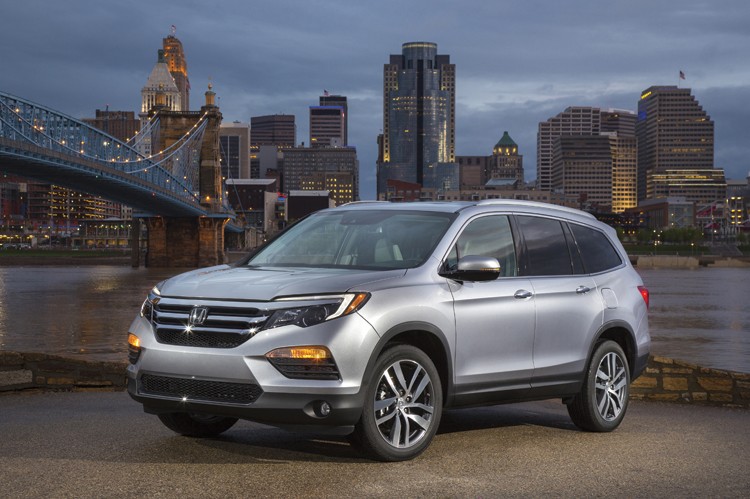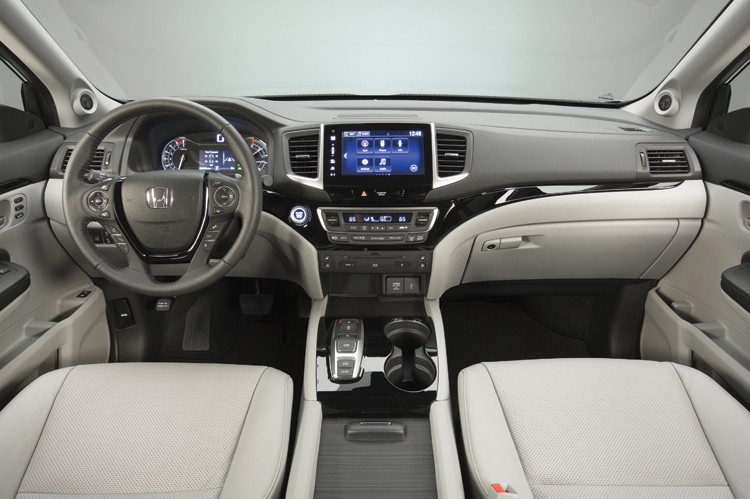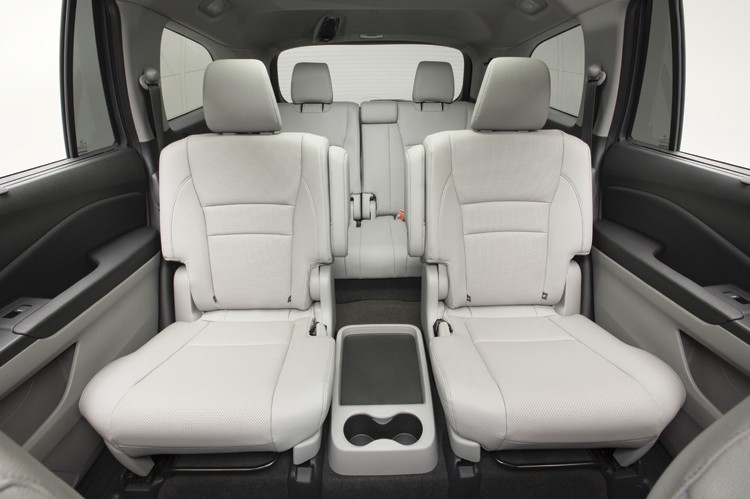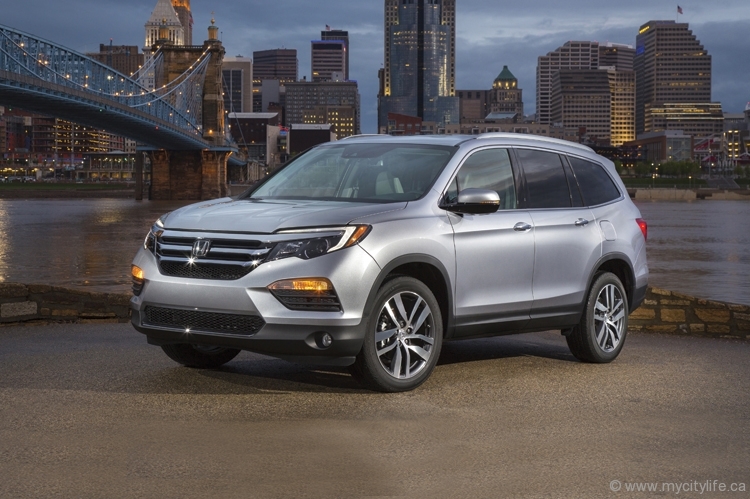2016 Honda Pilot
The 2016 Honda Pilot is no longer the midsize SUV underdog.
When it came time to craft the 2016 Pilot, Honda made the daring choice of developing it with the use of computer modelling and 3D printing. Until their vehicles were in pre-production last year, Honda had only seen the Pilot on their computer screens — a futuristic approach for a 67-year-old car manufacturing company. For decades, cars have been built using million-dollar physical prototypes designed by even more expensive machines. Honda says computer modelling and 3D printing trimmed months off of the development time and saved the corporation millions of dollars. But did it make a better product? Although it was a controversial choice, Honda was willing to take a chance.
Engineers tweaked over and over again to give midsize SUV lovers the sleekest Pilot yet. The exterior of the 2016 model is much more soft and round compared to the outdated square look of earlier iterations. So much so that owners of older models might find this new version unrecognizable. Not only did the esthetic of the vehicle change, but so did the weight. Honda was able to shed 300 pounds off of the Pilot, improving its performance.
Keeping in the theme of performance improvements, under the hood you’ll find a 3.5-Litre i-VTEC V-6 engine. This gives the 2016 Pilot 280 horsepower and 262 lb.-ft. of torque for its 6- and 9-speed automatic transmissions. The 9-speed automatic transmission, which is actually new to Honda, is only available on the top-of-the-line touring model. Also new to Honda and being unveiled on the Pilot is the torque-vectoring all-wheel drive system. According to Honda, this new AWD reacts 46 per cent faster than the older model.
On the inside, the Pilot remains a seven- or eight-passenger vehicle (capacity depends on model) even with its 300-pound weight loss. Despite the seemingly smaller appearance of the 2016’s exterior, the SUV was able to gain interior space. The entire vehicle had a 90 mm length increase; the wheelbase is 45 mm longer, the rear cargo area is 35 mm longer, and the passenger compartment gained 25 mm in spaciousness. There is also a detachable shelf behind the third row for additional storage, which can easily be reached thanks to the easy-to-move captain chair back seats.
The Pilot is technologically advanced. As opposed to conventional shift levers, Honda went with the trendsetting push buttons instead. This means that if you want to shift gears from drive to reverse, it only takes the push of a button. Easy, right? Not necessarily. If you’ve been driving for years with a shift lever this may take time to adjust to, as it doesn’t take much to accidentally push the wrong button. In the centre console, you’ll find five USB ports (probably more than necessary) and four 2.5-amp cellphone charging outlets. Passengers will not be calling “shotgun!” when they find out that the back seat has a nine-inch Blu-ray compatible screen, a 115-volt plug, and “legacy inputs” for older technology devices. One of the unique features this midsize SUV comes with is a Smart Key automatic starter, which has a 55-metre range and remote climate control in case you have an exact temperature preference for when you’re sitting in the car. Gone are the days of suffering the unbearably freezing winter mornings and hot, humid summers.
The 2016 Honda Pilot is certainly a family vehicle, which means safety was the No. 1 concern many critics had when it debuted; with such innovative manufacturing, safety was constantly questioned. Honda was able to silence the critics when the 2016 Pilot was given the highest possible safety rating by the IIHS (Insurance Institute for Highway Safety) back in August. If you wondered how all these new improvements and changes would fare when implemented using computer modelling and 3D printing as opposed to traditional machines and prototypes, clearly the answer is: quite well. In fact, Honda says that from now on this is how they will manufacture all of their vehicles.




















































































No Comment